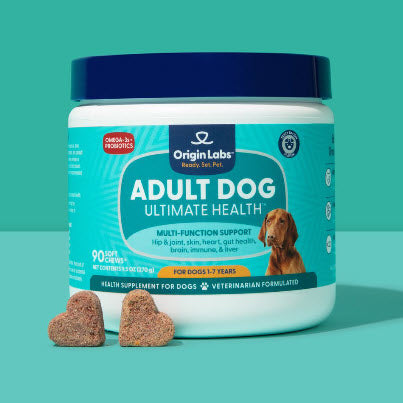Introduction
Can dogs eat lima beans? This question often arises among pet owners who are cautious about introducing new foods to their furry friends. Lima beans, a common pantry staple, are known for their nutritional benefits in humans, but what about our four-legged companions?
Dog lima beans: The primary concern is whether these legumes are safe and beneficial for canine consumption. It's essential to address this concern by understanding the nutritional needs of dogs. Unlike humans, dogs have specific dietary requirements that must be met to ensure their overall health and well-being.
Feeding your dog human foods like lima beans requires careful consideration. The key lies in understanding the balance between providing essential nutrients and avoiding potential risks. Not all human foods are suitable for dogs, and some can even be harmful.
For pet parents looking to diversify their dog's diet with nutritious additions, exploring options like lima beans can be beneficial. However, it's crucial to make informed decisions based on the unique needs of your dog and seek advice from a veterinarian.
If you're interested in supporting you dog's optimal, specifically formulated supplements can provide the necessary support tailored to your dog's age. These include senior dog supplements, designed to support the specific health needs of older dogs, and adult dog supplements, which offer support for adult dogs as they continue to grow and develop.
The Nutritional Value of Lima Beans for Dogs
Lima beans are often praised for their nutritional content, which can also benefit our canine companions. By understanding the specific nutrients that make lima beans a good addition to a dog's diet, pet owners can make more informed decisions.
Key Nutrients in Lima Beans
1. Plant-Based Protein: Lima beans are an excellent source of plant-based protein, essential for dogs' muscle development and overall health. Protein supports:
- Muscle repair and growth
- Immune system function
- Production of enzymes and hormones
Dogs require high-quality proteins to maintain their energy levels and bodily functions. While animal proteins are typically preferred, plant-based proteins from sources like lima beans can complement a dog’s diet.
2. Fiber: Fiber is another significant component of lima beans. Dietary fiber aids in:
- Digestive health: Fiber helps regulate bowel movements and prevent constipation.
- Weight management: High-fiber foods can promote a feeling of fullness, potentially reducing overeating.
- Blood sugar control: Fiber slows down the absorption of sugar, which may help manage blood glucose levels.
Additional Nutrients
Apart from protein and fiber, lima beans contain several other beneficial nutrients:
- Vitamins: Lima beans are rich in vitamins such as Vitamin B6, which supports brain health and red blood cell production.
- Minerals: Essential minerals like iron, magnesium, and potassium found in lima beans contribute to various bodily functions, including oxygen transport and muscle function.
Incorporating Lima Beans into Your Dog's Diet
When considering adding lima beans to your dog's diet, it's crucial to balance them with other nutrient sources. For instance:
- Ultimate Health Supplements tailored for puppies can provide additional support alongside natural food sources like lima beans. Best Puppy Health Supplements can support your growing dogs needs.
Balancing Nutrients for Optimal Health
While lima beans offer several benefits, they should be part of a diverse diet. Combining plant-based proteins with high-quality commercial dog food ensures that dogs receive all essential nutrients without relying solely on one food type.
Incorporating these dog-friendly nutrients in moderation can support overall canine health while providing variety in their diet.
Potential Benefits of Feeding Lima Beans to Dogs
Health Benefits of Lima Beans for Dogs
Lima beans are packed with essential nutrients that can improve your dog's health in the following ways:
- Plant-Based Protein: Lima beans are a great source of plant-based protein, which is important for building and repairing muscles. They can be especially beneficial for dogs with dietary restrictions or allergies to animal proteins.
- Fiber: With their high fiber content, lima beans promote healthy digestion by regulating bowel movements and preventing constipation.
Lima Beans for Diabetes Management in Dogs
Lima beans may also help manage diabetes in dogs because they have a low glycemic index, which means they don't cause rapid spikes in blood sugar levels. Here's why this matters:
- Blood Sugar Control: The fiber in lima beans slows down the absorption of sugar, helping to maintain stable blood sugar levels. This is crucial for effective diabetes management.
- Weight Management: Thanks to their fiber content, lima beans can also make your dog feel fuller for longer periods, reducing the likelihood of overeating and aiding in weight management efforts.
Additional Health Benefits
Aside from their positive effects on muscles and digestion, lima beans offer other potential health advantages:
- Antioxidants: Lima beans contain antioxidants that protect cells from damage caused by harmful molecules called free radicals. By doing so, they can help reduce inflammation and support your dog's immune system.
- Nutrient Variety: Including lima beans in your dog's diet adds variety to their nutrient intake, contributing to overall balanced nutrition.
Feeding your dog lima beans can provide multiple health benefits, making them a valuable addition to their diet when prepared correctly.
Potential Risks and Considerations
Introducing new foods into your dog's diet always comes with potential risks. Lima beans , while nutritious, are no exception. Here are some key considerations to keep in mind:
Allergic Reactions to Lima Beans in Dogs
Dogs can have allergic reactions to various foods, including lima beans. Symptoms of an allergic reaction might include:
- Itching and scratching
- Skin rashes or hives
- Swelling of the face, ears, lips, or eyelids
- Gastrointestinal upset (vomiting or diarrhea)
If you notice any of these symptoms after feeding your dog lima beans, it's crucial to discontinue their consumption immediately and consult your veterinarian. Allergic reactions can be serious and require prompt attention.
Importance of Moderation
Feeding lima beans to dogs should be done in moderation. While they offer several health benefits, overconsumption can lead to digestive issues. Dogs' digestive systems are not accustomed to processing large quantities of legumes, which can result in:
- Bloating and gas: Excessive fiber in a dog's diet can cause discomfort.
- Diarrhea: Too many lima beans can overwhelm a dog's digestive tract.
- Nutrient imbalance: Overfeeding any single type of food can disrupt the balance of nutrients in a dog's diet.
Portion Sizes for Dogs
Determining the right portion size is essential when introducing lima beans to your dog's diet. Here are some guidelines:
- Small dogs (under 20 pounds): 1–2 tablespoons of cooked lima beans per serving.
- Medium dogs (20–50 pounds): 2–4 tablespoons per serving.
- Large dogs (over 50 pounds): Up to 1/4 cup per serving.
Start with smaller portions and observe how your dog reacts before gradually increasing the amount. This will help prevent immediate adverse effects and allow you to gauge tolerance levels.
Cooking Methods Matter
Raw lima beans contain linamarin, which can convert into toxic hydrogen cyanide when digested. To ensure safety:
- Always cook lima beans thoroughly before feeding them to your dog.
- Avoid canned varieties that often contain added salt, preservatives, or seasonings that could be harmful.
Introducing Gradually
Introduce lima beans slowly into your dog's diet. Mix a small amount with their regular food and monitor for any adverse reactions. Gradual introduction helps mitigate the risk of digestive upset and allows you to gauge tolerance levels.
By being aware of these risks and taking appropriate precautions, you can safely incorporate lima beans into your dog's diet while minimizing potential adverse effects. If you want to learn more about adverse food reactions in dogs, this resource provides additional insights.
How to Safely Prepare Lima Beans for Your Dog
Preparing lima beans for your dog requires careful attention to ensure they are both safe and beneficial. Here’s how to go about it:
Opt for Fresh or Frozen Lima Beans:
- Always choose fresh or frozen lima beans. Avoid canned varieties, as they often contain additives, preservatives, and seasonings that are harmful to dogs.
Thoroughly Cook the Beans:
- Cook the lima beans until they are soft. This process helps break down any substances that might be difficult for your dog to digest.
- Avoid adding any seasonings, salt, or spices during cooking. Dogs do not need these flavorings and some can be toxic.
Remove Outer Shells:
- If the beans have tough outer shells, consider removing them after cooking. This makes the beans easier for your dog to chew and digest.
Puree or Mash:
- Puree or mash the cooked lima beans to make them more palatable and easier to mix with your dog's regular food.
Portion Control:
- Start by incorporating a small amount of mashed or pureed lima beans into your dog's diet and observe their reaction.
- Gradually increase the portion if no adverse reactions occur, but keep it within moderation.
By following these steps, you can safely introduce lima beans into your dog's diet while ensuring they receive the nutritional benefits without any risks from additives or seasonings.
Delicious Ways to Serve Lima Beans to Your Canine Companion
Incorporating lima beans into your dog's diet can be both fun and nutritious. Here are some creative methods to prepare dog-friendly recipes and treats:
Lima Bean Mash
Lightly boil the lima beans until they are soft, then mash them thoroughly. This can be mixed with your dog's regular food or served as a standalone treat.
Lima Bean and Chicken Stew
Combine cooked lima beans with shredded chicken and a small amount of low-sodium chicken broth. This stew can be an occasional treat that adds variety to your dog's meals.
Lima Bean Treats
Blend cooked lima beans with pumpkin puree and oats, then shape into small balls or cookies. Bake until firm for a tasty, homemade dog treat.
Vegetable Medley
Mix lima beans with other dog-safe vegetables like carrots, peas, and sweet potatoes. Steam the mixture until everything is tender and serve it as a nutritious side dish.
Frozen Lima Bean Snacks
Puree cooked lima beans with some plain yogurt, then freeze in small portions. These frozen treats can be especially enjoyable during warm weather.
By exploring these methods, you can ensure that your canine companion enjoys the nutritional benefits of lima beans while keeping their meals interesting and appealing.
Alternatives to Lima Beans for Dogs
When considering dog-friendly vegetarian protein sources, several legumes can provide similar nutritional benefits to lima beans. Here are a few noteworthy options:
Butter Beans
- Nutritional Value: Similar to lima beans, butter beans offer high levels of fiber and plant-based protein.
- Health Benefits: They help in maintaining muscle mass and supporting digestive health.
Chickpeas (Garbanzo Beans)
- Nutritional Value: Rich in protein, fiber, and essential vitamins such as B6 and folate.
- Health Benefits: Excellent for promoting heart health and aiding in weight management due to their high fiber content.
Lentils
- Nutritional Value: Packed with protein, iron, and folate.
- Health Benefits: Beneficial for energy levels and maintaining healthy blood cells.
Peas
- Nutritional Value: High in fiber, protein, and essential vitamins like A, K, and B vitamins.
- Health Benefits: Supports vision health, immune function, and overall vitality.
Black Beans
- Nutritional Value: Loaded with antioxidants, protein, fiber, and essential minerals like magnesium.
- Health Benefits: Helps in boosting immune health and preventing oxidative stress.
Each of these legumes can be incorporated into your dog's diet as nutritious alternatives to lima beans. Always ensure they are cooked properly without added salt or seasonings.
Conclusion
Can dogs eat lima beans? Yes, when prepared and served appropriately, lima beans can be a healthy addition to your dog's diet. It's crucial to consider their individual dietary needs and any potential sensitivities.
Key Considerations:
- Consultation with Veterinarian: Before making significant changes to your dog's diet, including introducing new foods like lima beans, always consult with your veterinarian.
- Balanced Nutrition: Emphasize a balanced approach to canine nutrition. High-quality commercial dog food and specialized supplements play an essential role in maintaining overall health.
Introducing human foods into your dog's diet should be done with caution and expert guidance. Lima beans can be a nutritious treat, but it's essential to prioritize their well-being and dietary balance.
FAQs (Frequently Asked Questions)
Can dogs eat lima beans?
Yes, dogs can eat lima beans. However, it's important to prepare and serve them in a dog-friendly manner to ensure their safety and nutritional benefit.
What are the nutritional benefits of lima beans for dogs?
Lima beans contain dog-friendly nutrients such as plant-based protein and fiber, which can contribute to a balanced diet for dogs.
Are there potential health benefits of feeding lima beans to dogs?
Yes, there are potential health benefits of feeding lima beans to dogs, including potential assistance in managing diabetes in dogs.
What are the potential risks and considerations of feeding lima beans to dogs?
Some potential risks include allergic reactions and the importance of controlling portion sizes when feeding lima beans to dogs.
How should I safely prepare lima beans for my dog?
When preparing lima beans for canine consumption, it's essential to avoid canned varieties with additives or seasonings. Opt for cooked plain lima beans instead.
What are some delicious ways to serve lima beans to my canine companion?
You can explore different methods of incorporating lima beans into dog-friendly recipes and treats to make them more appealing to your dog.
Are there alternative legumes that can provide similar nutritional benefits for dogs?
Yes, there are other legumes such as butter beans that can provide similar nutritional benefits for dogs if they have sensitivities or preferences.
Any final thoughts on feeding lima beans to dogs?
Lima beans can be safely included in a dog's diet when prepared and served appropriately. However, it's crucial to consider their individual dietary needs and any potential sensitivities. Consult with a veterinarian before making significant changes to your dog's diet.








